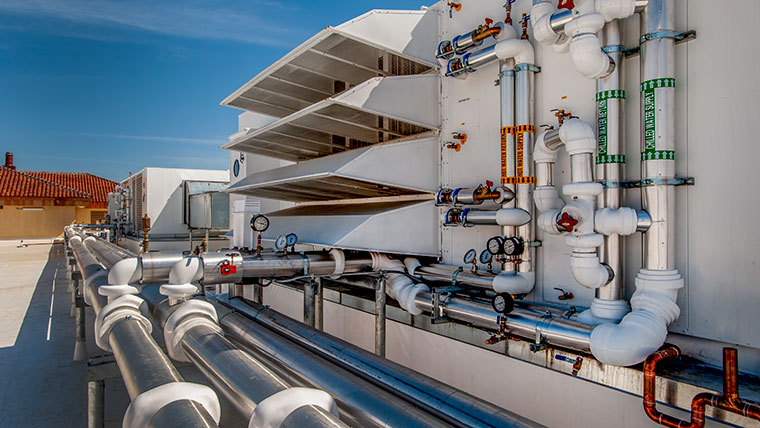In the spirit of David Letterman’s Late Show top ten list, I would like to present the top ten items to pay attention to when adding or replacing sanitary air handling units (SAHU) for your food processing facility. This is not a complete list, but it highlights what I consider some of the most critical items.
No. 10: Unhoused direct drive fans. These fans are easier to clean than traditional forward curved housed fans, and can be made more corrosion-resistant if specified with aluminum or epoxy coated construction. Direct drive means no fan belts to wear and release dust into the airstream. This often requires the use of variable frequency drives for the fans.
No. 9: Totally Enclosed Fan Cooled (TEFC) motors. Motors inside the SAHU should be able to withstand a unit interior wash down.
No 8: PLC controls. While SAHUs can be specified with stand-alone electronic controls and simple remote panels, consider Programmable Logic Controller (PLC) based controls compatible with your plant’s process PLC systems. The plant can monitor and alarm SAHU operation, trend performance data, and alert maintenance staff when unit operation deviates from design.
No. 7: Cooling coils with wide fin spacing. Cooling coils can act as filters and plug easily if cooling coils are specified with fin spacing that is too narrow. As an added measure, consider Ultraviolet Light (UVC) to irradiate the downstream side of the cooling coil to minimize bacteria growth and coil fouling with organic material.
No. 6: Airfoil or stainless-steel dampers. Dampers are a collection point for airborne dust and contaminants. They should be made of a corrosion-resistant material with minimal crevices where contaminants can collect.
No. 5: High turndown gas heat. For SAHUs with natural gas heating systems, specify the highest capacity control turndown as possible. Food plant SAHUs frequently operate over a large range of heating requirements, so maximum capacity range is essential to maintain reasonable space conditions and effective unit operation. This usually results in a 400 series stainless-steel heat exchanger.
No. 4: High efficiency filters with stainless-steel holding frames. The last section of a SAHU before air leaves the unit should contain a high efficiency filter so that air leaving the unit is clean. To minimize air bypass around the filter, there should be mechanical means to secure the filters to press them against the gasketed filter frame. There should also be at least one bank of lower efficiency filters upstream of the final filters to catch larger particulates. This serves to extend the life of the final filters as well as protect other unit components.
No. 3: Corrosion-resistant washdown duty liners. The main interior surface of the SAHU should be corrosion resistant and capable of withstanding frequent pressurized wash down with cleaning chemicals. This means the unit liner should be lapped to shed water and floors should be fully welded to prevent water from entering the inside of the unit casing.
No. 2: Access sections. SAHUs are designed to be frequently cleaned and inspected. This means for larger SAHUs, plant personnel must be able to physically enter the unit to perform detailed visual inspections of unit components to make sure they are clean. This feature is not typically present in commercial grade air conditioning units.
Drum roll please….
And No. 1 on the list is: Drain pans in every unit section. When plant sanitation crews clean the interior of a SAHU, there must be means of removing the cleaning water and chemicals from the unit interior. This is typically accomplished by pitching the floor of every unit section to a low point and connecting a drainpipe to the unit exterior.
If all ten of these items are considered, then the plant will have a SAHU in place that will maximize sanitary safety, minimize maintenance costs, and extend unit lifespan to the furthest extent possible.


